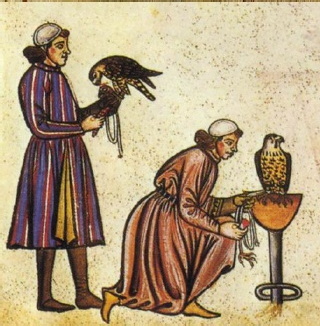Introduction
Ornithology heresy refers to the controversial or unorthodox ideas, theories, or practices within the field of ornithology, which is the scientific study of birds. These heretical viewpoints often challenge established beliefs, methodologies, or interpretations in bird research and can spark debates among ornithologists. While heresy in ornithology may be met with skepticism, it can also lead to new discoveries and advancements in our understanding of avian biology and behavior.
Exploring the Impact of Ornithology Heresy on Avian Research
Ornithology Heresy: Exploring the Impact of Ornithology Heresy on Avian Research
Ornithology, the study of birds, has long been a respected field of scientific research. Ornithologists have dedicated their lives to understanding the behavior, ecology, and evolution of these fascinating creatures. However, like any scientific discipline, ornithology is not immune to controversy and dissenting opinions. In recent years, a phenomenon known as “ornithology heresy” has emerged, challenging established theories and shaking the foundations of avian research.
Heresy, in the context of ornithology, refers to the rejection or questioning of widely accepted ideas and theories. It is important to note that heresy, in this sense, is not inherently negative. In fact, it can be a driving force for scientific progress, pushing researchers to reevaluate existing knowledge and explore new avenues of inquiry. However, when heresy becomes detached from evidence-based reasoning and devolves into baseless speculation, it can have detrimental effects on the field.
One area where ornithology heresy has had a significant impact is in the study of bird migration. For decades, researchers have relied on the theory of innate navigation to explain how birds are able to navigate vast distances during their annual migrations. According to this theory, birds possess an internal compass that allows them to sense the Earth’s magnetic field and use it as a navigational aid. However, a small but vocal group of ornithologists has challenged this theory, arguing that birds rely on visual landmarks and celestial cues instead.
While it is healthy to question established theories, the problem arises when heretical ideas lack empirical evidence or fail to provide a plausible alternative explanation. In the case of bird migration, the innate navigation theory is supported by a wealth of experimental data and observations. Birds have been shown to possess magnetoreceptors in their eyes, beaks, and inner ears, providing strong evidence for their ability to sense the Earth’s magnetic field. Furthermore, studies using magnetic field manipulation have demonstrated that disrupting the magnetic cues significantly impairs birds’ ability to navigate.
Another area where ornithology heresy has made waves is in the study of avian intelligence. Traditionally, birds were considered to be relatively simple creatures, with limited cognitive abilities. However, recent research has challenged this notion, revealing remarkable cognitive skills in various bird species. Yet, some heretical voices argue that these findings are exaggerated or misinterpreted, suggesting that birds are merely responding to stimuli rather than exhibiting true intelligence.
Again, it is crucial to critically evaluate heretical claims and consider the evidence supporting them. Studies on avian intelligence have employed rigorous experimental designs, demonstrating birds’ ability to solve complex problems, use tools, and exhibit self-awareness. These findings have important implications for our understanding of animal cognition and challenge the long-held belief that intelligence is exclusive to mammals.
While ornithology heresy can be disruptive, it is an essential part of the scientific process. It forces researchers to reexamine their assumptions, test their hypotheses rigorously, and refine their theories. However, it is crucial that heretical ideas are grounded in evidence and subjected to peer review. Without this critical evaluation, heresy can lead to the spread of misinformation and hinder scientific progress.
In conclusion, ornithology heresy has had a significant impact on avian research, challenging established theories and pushing the boundaries of our understanding. While heretical ideas can be valuable in driving scientific progress, it is essential to critically evaluate them and ensure they are supported by empirical evidence. By doing so, we can continue to unravel the mysteries of avian behavior, ecology, and evolution, and further our knowledge of the incredible world of birds.
Debunking Common Misconceptions in Ornithology
Ornithology Heresy
Ornithology, the study of birds, has long fascinated scientists and bird enthusiasts alike. However, like any field of study, there are common misconceptions that have been perpetuated over time. In this article, we will debunk some of these misconceptions and shed light on the truth behind them.
One common misconception in ornithology is the belief that all birds can fly. While it is true that the majority of bird species are capable of flight, there are exceptions to this rule. For example, the ostrich, the largest bird in the world, is flightless. It relies on its powerful legs to run at high speeds instead. Similarly, penguins are also flightless birds, but they have adapted to life in the water, using their wings as flippers to swim gracefully through the ocean.
Another misconception is that all birds build nests. While nest-building is a common behavior among many bird species, not all birds engage in this activity. For instance, the kiwi, a flightless bird native to New Zealand, does not build nests. Instead, it lays its eggs directly on the ground, relying on camouflage to protect them from predators. Additionally, some bird species, such as the cuckoo, are known as brood parasites. They lay their eggs in the nests of other bird species, tricking them into raising their young.
One of the most persistent misconceptions in ornithology is the belief that birds migrate to escape the cold. While migration is indeed a response to changing seasons, it is not solely driven by the need to escape cold temperatures. Many bird species migrate to find better food sources or breeding grounds. For example, the Arctic tern holds the record for the longest migration of any bird, traveling from its breeding grounds in the Arctic to its wintering grounds in Antarctica. This incredible journey is not motivated by temperature but rather by the availability of food.
Another misconception is that all birds sing. While it is true that many bird species are known for their beautiful songs, not all birds possess this ability. In fact, some bird species, such as the mute swan, are known for their lack of vocalizations. Instead, they communicate through visual displays and body language. Additionally, some bird species, such as the woodpecker, use drumming sounds to communicate with each other and establish territories.
Lastly, there is a misconception that all birds lay eggs. While it is true that the vast majority of bird species lay eggs, there are exceptions to this rule. The three species of echidnas, also known as spiny anteaters, are the only mammals that lay eggs. These unique creatures, native to Australia and New Guinea, have evolved a reproductive strategy similar to that of birds.
In conclusion, ornithology is a fascinating field of study that has its fair share of misconceptions. From the belief that all birds can fly to the assumption that all birds build nests, it is important to debunk these myths and uncover the truth behind them. By understanding the diverse behaviors and adaptations of birds, we can gain a deeper appreciation for the incredible diversity of avian life on our planet.
The Controversial History of Ornithology Heresy
Ornithology Heresy: The Controversial History of Challenging Bird Science
Ornithology, the study of birds, has a long and storied history. From the early observations of ancient civilizations to the modern scientific methods employed today, ornithologists have sought to understand the fascinating world of avian creatures. However, throughout this history, there have been instances of heresy, where individuals have challenged the prevailing beliefs and theories of the field. These instances of ornithology heresy have often sparked controversy and debate, pushing the boundaries of our understanding of birds and their behavior.
One of the earliest examples of ornithology heresy can be traced back to the 16th century, with the work of Conrad Gessner. Gessner, a Swiss naturalist, published a book titled “Historiae Animalium,” in which he described and illustrated various animals, including birds. However, his depictions of certain species were met with skepticism and criticism from his contemporaries. Gessner’s illustrations of birds such as the hoopoe and the pelican were considered inaccurate and exaggerated, leading to doubts about the credibility of his work.
Moving forward in time, we come across another controversial figure in the field of ornithology heresy: Jean-Baptiste Lamarck. Lamarck, a French naturalist, proposed a theory of evolution that challenged the prevailing belief in the fixity of species. In his book “Philosophie Zoologique,” published in 1809, Lamarck argued that species could change over time through the inheritance of acquired characteristics. This idea, known as Lamarckism, was met with strong opposition from the scientific community, including ornithologists who believed in the concept of species being immutable. Lamarck’s ideas were largely dismissed and ridiculed, but they laid the groundwork for future evolutionary theories.
Fast forward to the 20th century, and we encounter another instance of ornithology heresy, this time in the form of Margaret Morse Nice. Nice, an American ornithologist, conducted groundbreaking research on the behavior of songbirds. Her meticulous observations challenged the prevailing belief that birdsong was purely instinctual and fixed. Nice’s work showed that birds could learn and modify their songs over time, a concept that was met with resistance from many ornithologists who believed in the innate nature of birdsong. Despite the controversy, Nice’s research paved the way for further studies on bird behavior and communication.
In more recent times, the field of ornithology heresy has expanded to include the study of bird intelligence. Researchers such as Irene Pepperberg and Alex Kacelnik have challenged the notion that birds are not capable of complex cognitive abilities. Pepperberg’s work with an African grey parrot named Alex demonstrated the bird’s ability to understand and use human language, while Kacelnik’s experiments with New Caledonian crows revealed their remarkable problem-solving skills. These findings have sparked debates among ornithologists and have forced a reevaluation of our understanding of avian intelligence.
In conclusion, the history of ornithology heresy is a testament to the ever-evolving nature of scientific knowledge. From Gessner’s inaccurate illustrations to Lamarck’s controversial theories, and from Nice’s groundbreaking research to the current studies on bird intelligence, ornithologists have continuously pushed the boundaries of our understanding of birds. While these instances of heresy have often been met with resistance and skepticism, they have ultimately contributed to the advancement of the field. As our knowledge of birds continues to grow, it is important to remain open to new ideas and perspectives, even if they challenge our long-held beliefs. After all, it is through the exploration of heresy that we can truly expand our understanding of the avian world.
Conclusion
In conclusion, Ornithology Heresy refers to the act of challenging or deviating from established beliefs, theories, or practices within the field of ornithology. It involves questioning traditional ideas and proposing alternative explanations or interpretations regarding bird behavior, evolution, taxonomy, or other aspects of avian biology. Ornithology Heresy can contribute to scientific progress by encouraging critical thinking and the exploration of new ideas, but it can also be met with resistance and skepticism from the scientific community.

